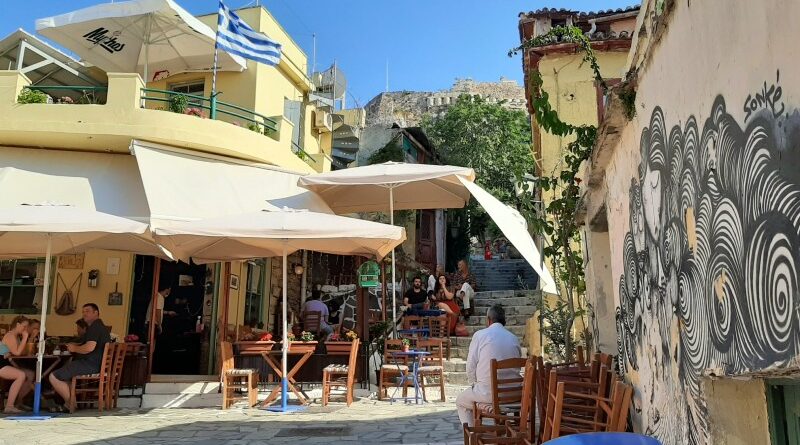Exploring Plaka: Through the Winding Streets of the Old Town of Athens
In this destination guide, we will explore Athens’ old town neighbourhood of Plaka.
Central Athens
Plaka is the name of what basically is the old town centre of Athens.
Located on the northern slopes of the Acropolis, the wider Plaka area basically runs from Syntagma Square in the east to Monastiraki Square in the west up to the Acropolis itself in the south.
It is therefore no surprise that there are some commanding views over the Acropolis and its famous Parthenon temple from most streets and squares in the Plaka area.
Having tons of shops, cafes and restaurants, it is no surprise that the neighbourhood is ground zero for any tourist visiting Athens.
Both Syntagma and Monastiraki make for excellent starting points to start your tour of Plaka, especially given the fact that both squares have important metro stations and other public transport links.
Even though I visited Athens (and thus the whole Plaka neighbourhood) countless of times before, I still enjoy walking through the meandering streets and to sit down at one of the many cafes to enjoy a coffee.
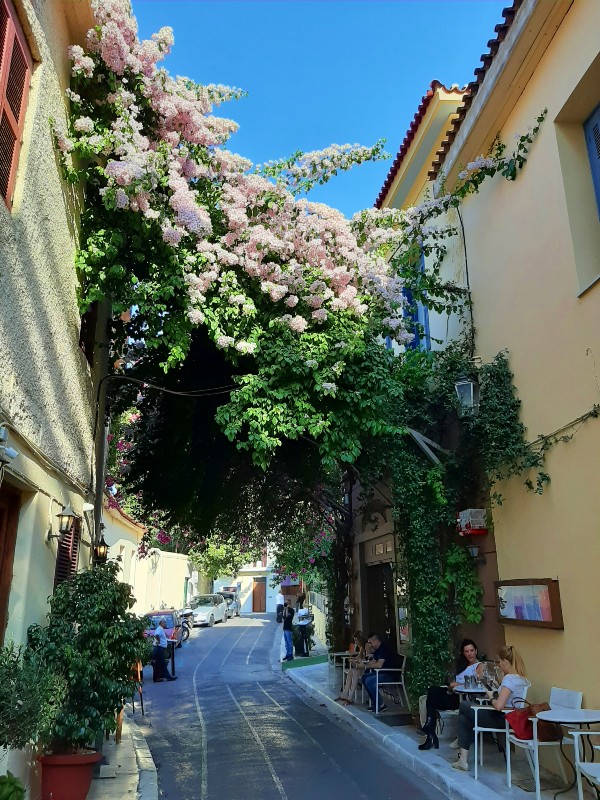
Syntagma
I started my walk at Syntagma Square, which is one of the main squares of Athens.
It is dominated by the neoclassical parliament building on the eastern flank of the square.
Completed in 1843, it was originally designated to be the royal palace for King Otto of Greece, who took the helm as the national ruler under the newly established monarchy.
Since 1934, it however houses the Hellenic Parliament.
Because of this, Syntagma Square is frequently the location of anti-government protests.
In front of the building is the Tomb of the Uknown Soldier, which is guarded 24 hours a day by the Presidential Guard.
The guards, dressed in traditional Evzones (elite light infantry) uniforms with trademark tsarouchia shoes, still parade the grounds in finely choreographed walks.
Two luxury hotels (the Grande Bretagne and King George Hotel) line the northern side of the square.
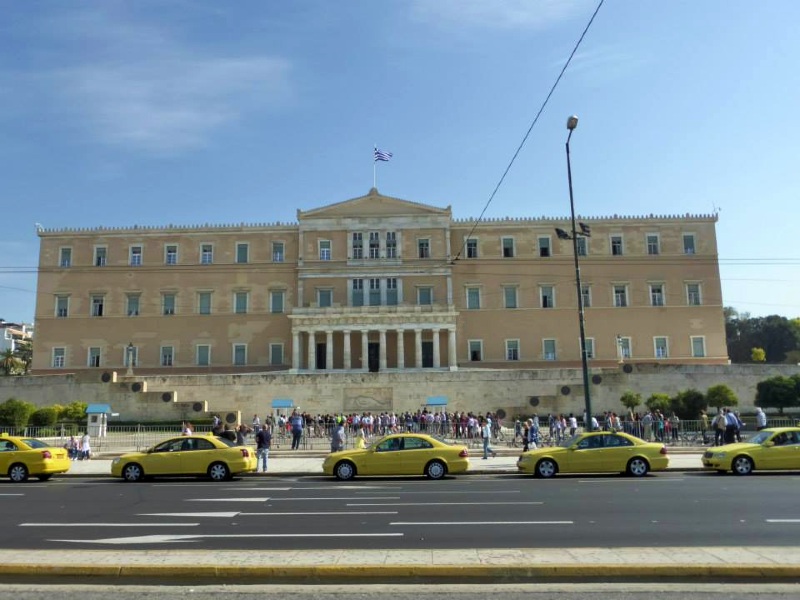
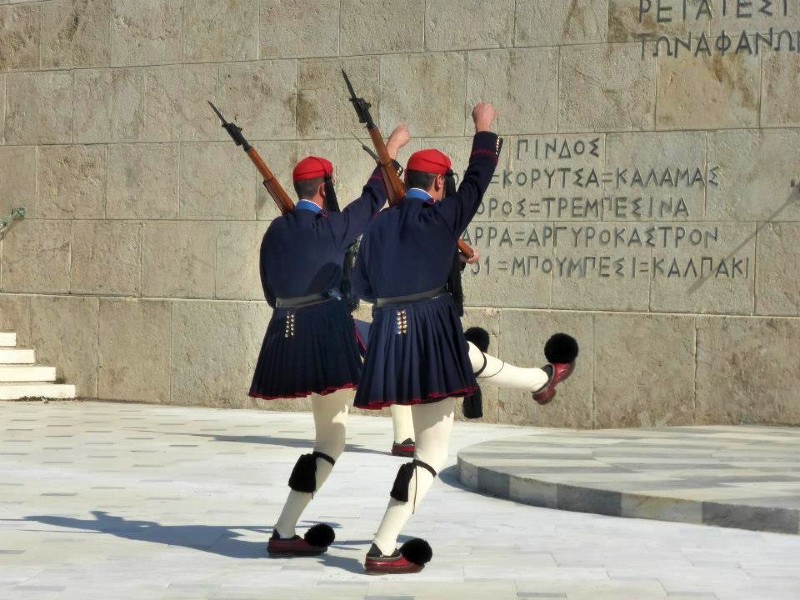
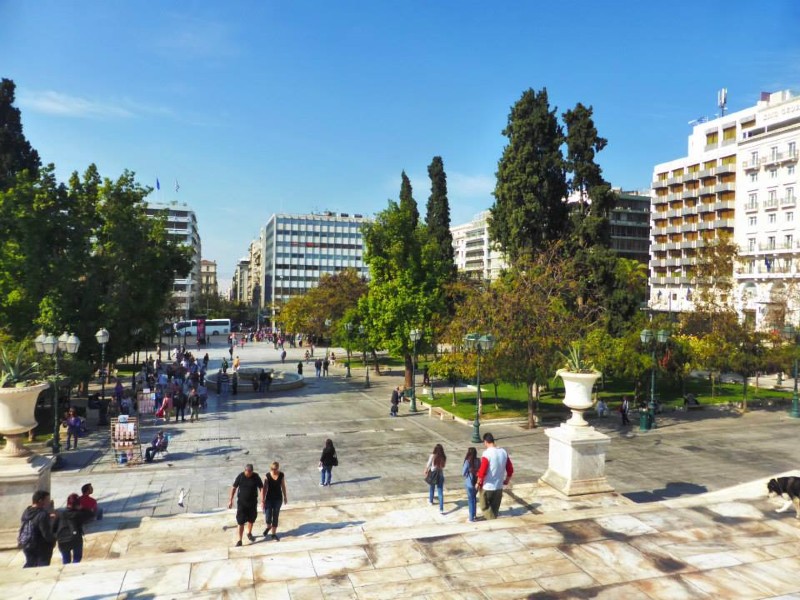
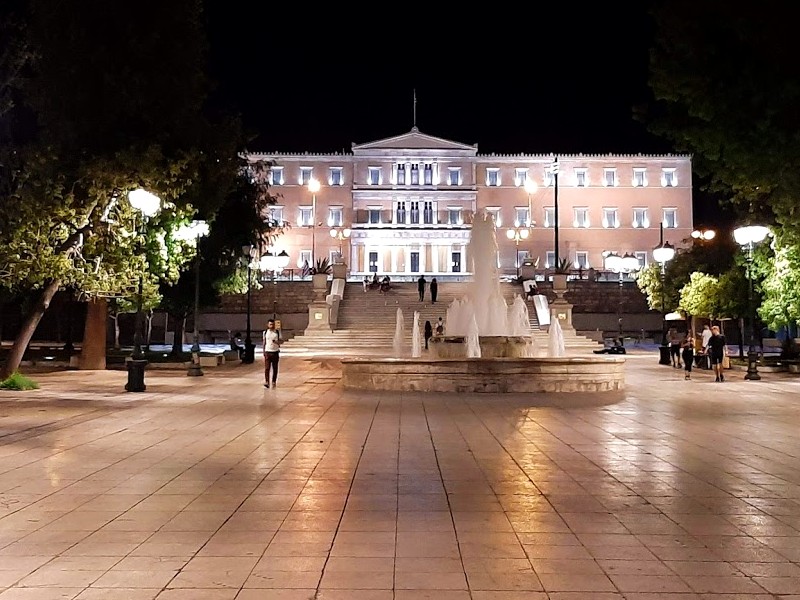

Commercial centre
The area directly west of Syntagma is the commercial centre of Athens and is full of high street shops, most of them the ubiquitous international chain stores.
If you walk along pedestrianised Ermou Street, you will pass by a lot of them until you reach Monastiraki Square at the western end of Plaka.
Although these shopping streets are certainly not the most interesting part of Athens, they do feature two old Byzantine churches.
Halfway between Syntagma and Monastiraki you will find the 11th century Church of Panagia Kapnikarea (Church of the Assumption of the Virgin Mary) on Ermou Street.
A bit further south you can find the large Metropolitan Cathedral of Athens Evangelismos Theotokou, which was built in the 19th Century and is the main church of the Archbishopric of Athens.
Perhaps more interesting is the tiny little Church of St. Eleftherios directly to the south of the Cathedral.
This miniature church, also called ‘Little Metropolis’, was most likely built in the 9th Century, making it one of Athens’ oldest churches.
Although there are plenty of restaurants and cafes in the commercial centre, some streets in this area are also a bit dilapidated with buildings almost completely covered in graffiti.
This is unfortunately a common sight in Athens as beauty and ugliness, as well as renovation and decay, go hand in hand.
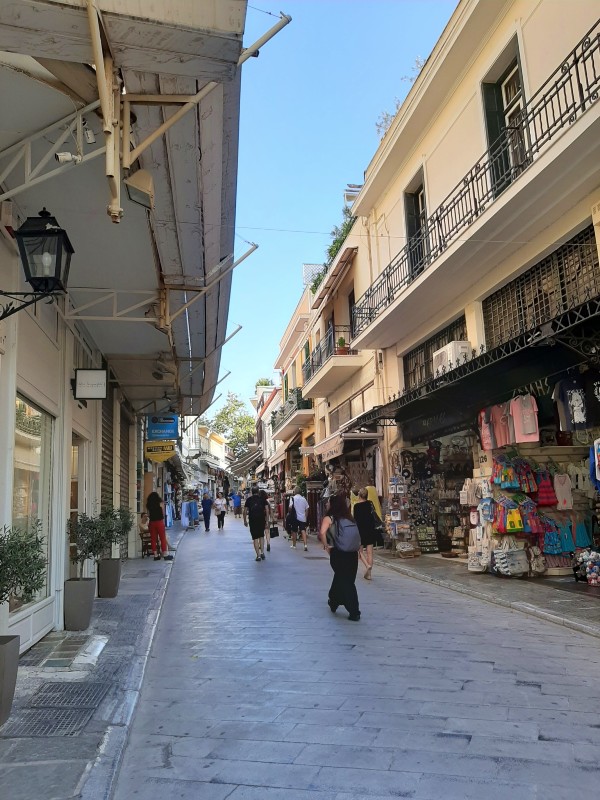
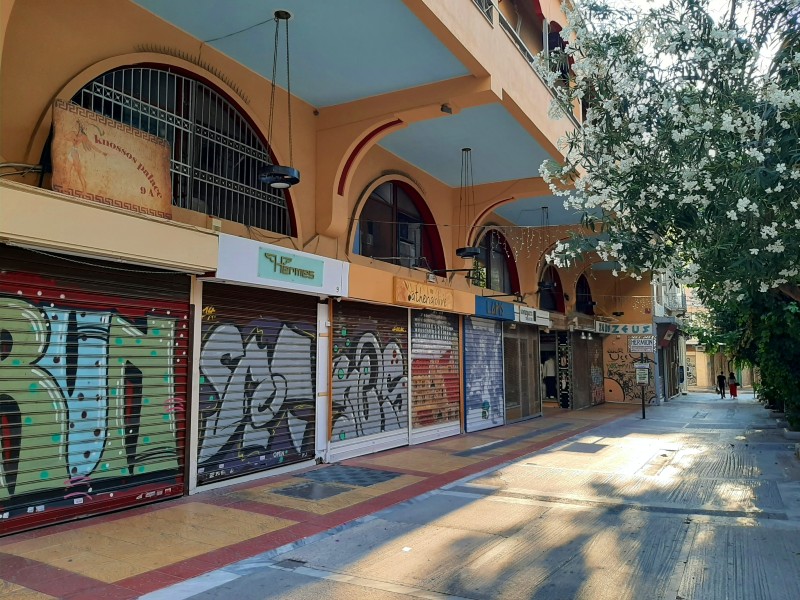
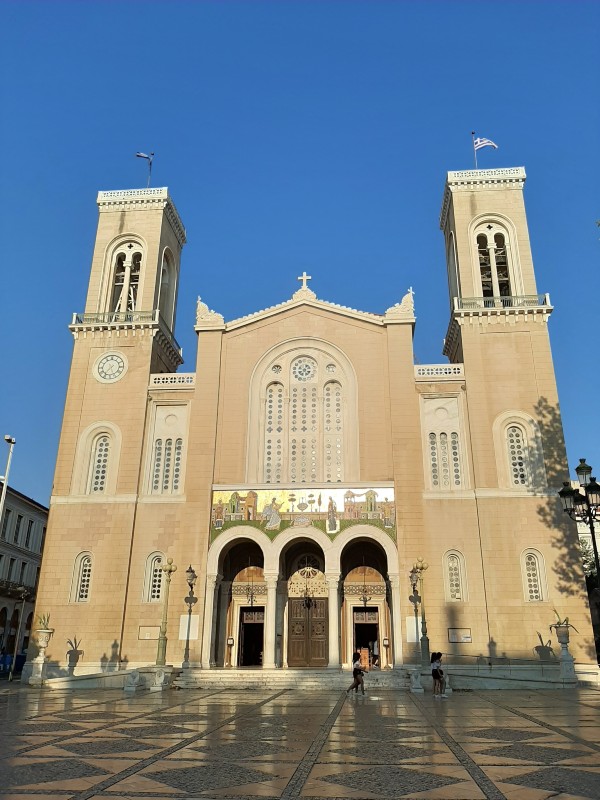
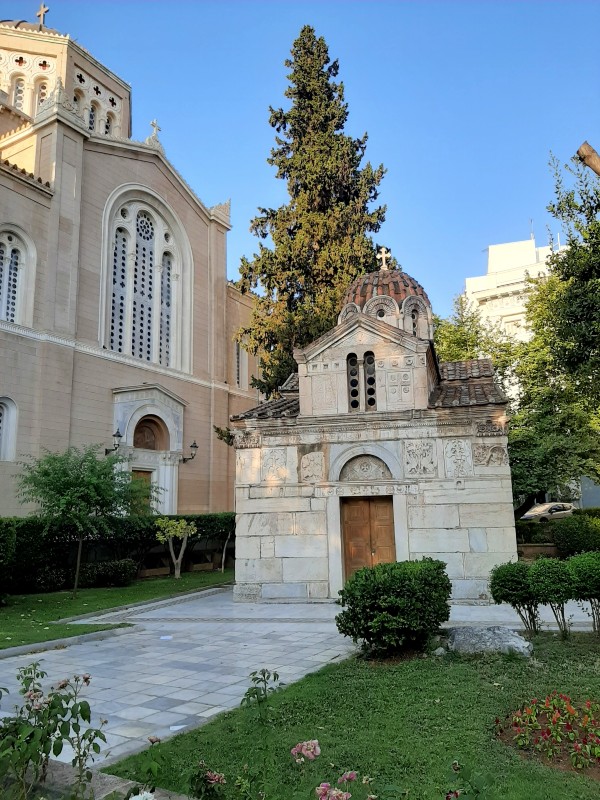
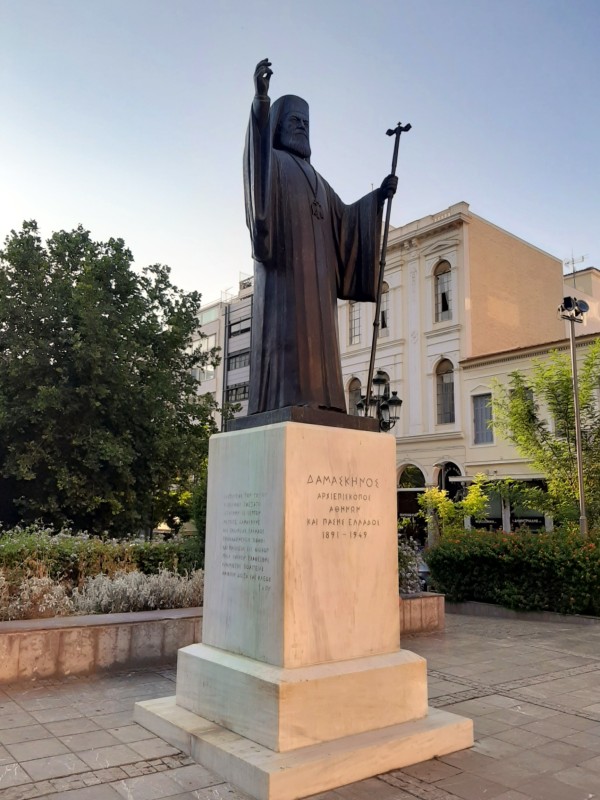
Monastiraki
Monastiraki (which literally means ‘little monastery’) is the other main square in downtown Athens.
It’s named after the small 10th Century Pantanassa Church on the square, which was once part of a larger monastery complex.
Another main building on the square is Tzistarakis Mosque, a former Ottoman mosque.
Immediately west of the square you can find the Monastiraki flea market, which is a popular place for tourists to shop for souvenirs.
In the area you can also find plenty of souvlaki and gyros fast food places, cafes and restaurants.
As it’s a tourist hotspot, Monastiraki can be a crowded place, so do watch out for pickpockets here.
There is also some minor hassle from trinket sellers and beggars on the square.
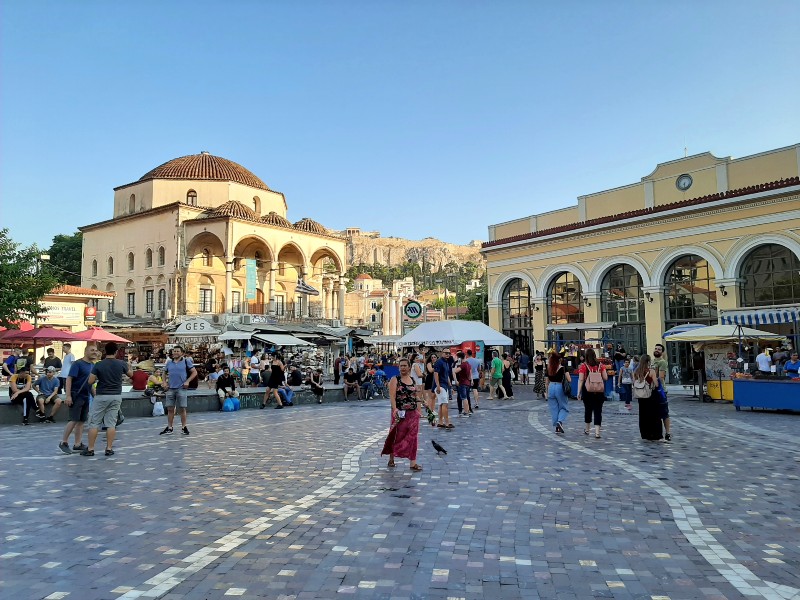
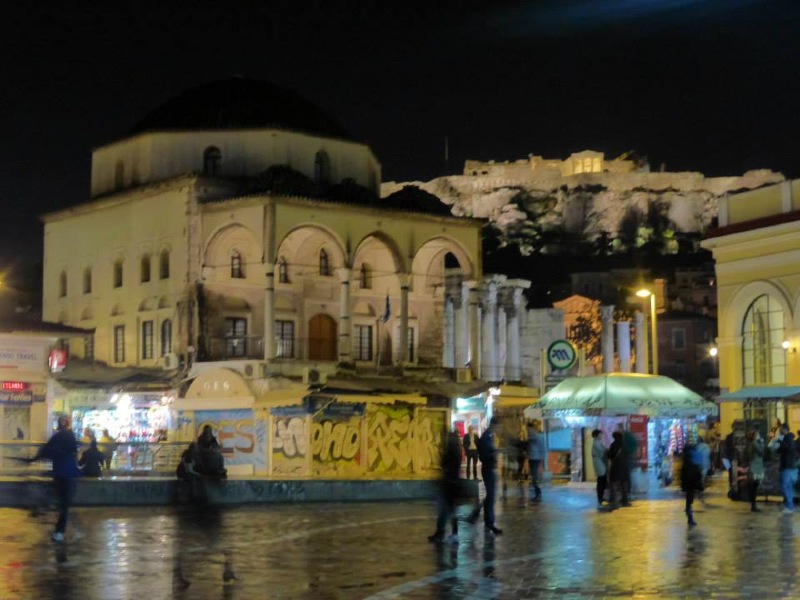
Roman ruins
When one thinks of the city of Athens, the first thing that will probably jump into mind is Ancient Greece and its sophisticated culture which from politics to arts and philosophy has influenced so many aspects of civilisation.
There is however so much more to Athens than just ancient Greek history.
The area just south of Monastiraki square is full of Roman-era remains, most of them built after the year 27 BC.
The first sight you will likely come across is the vast terrain of Hadrian’s Library, which was constructed in the 2nd Century AD by Emperor Hadrian.
Although not much is remaining, it once included a cloistered courtyard with 100 columns and a theatre.
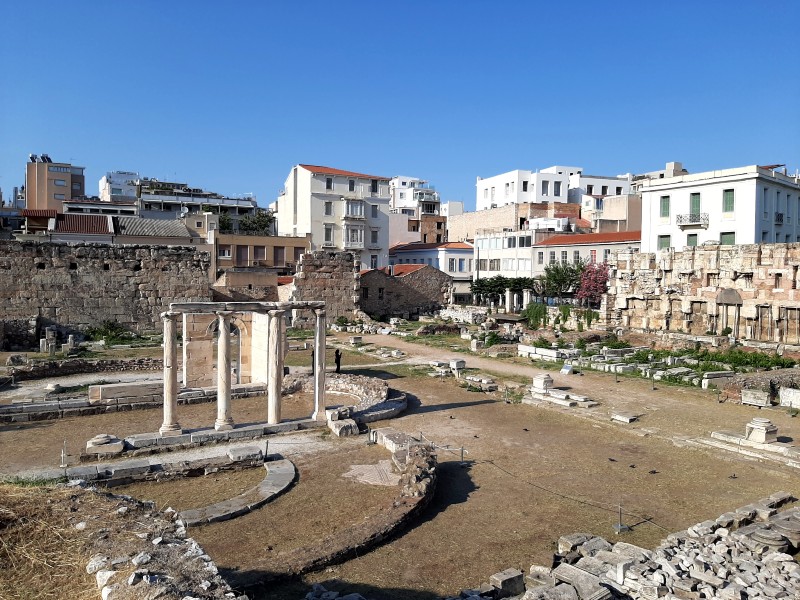
Roman agora
Further south, you can find the old Roman agora, which used to be a central public space for gatherings and also doubled as a marketplace.
Some Doric columns, as well as the well-preserved Tower of the Winds from the 1st Century BC, are the highlights of the agora.
The 17th Century Fethiye mosque was built by the Ottomans in one of the corners of the square.
Like Hadrian’s Library, you can see most of the remains of the Roman agora from the public streets surrounding the site, although history buffs probably want to buy an entrance ticket to walk inside the fenced-off area as well.
When walking along the Roman agora, I was lucky enough to come across two quality street musicians, singing old Greek songs with a bouzouki (traditional Greek mandolin) in hand.
I stopped for a while to enjoy the sounds, feeling lucky to be in Greece again on holiday during these challenging months of the corona virus pandemic.
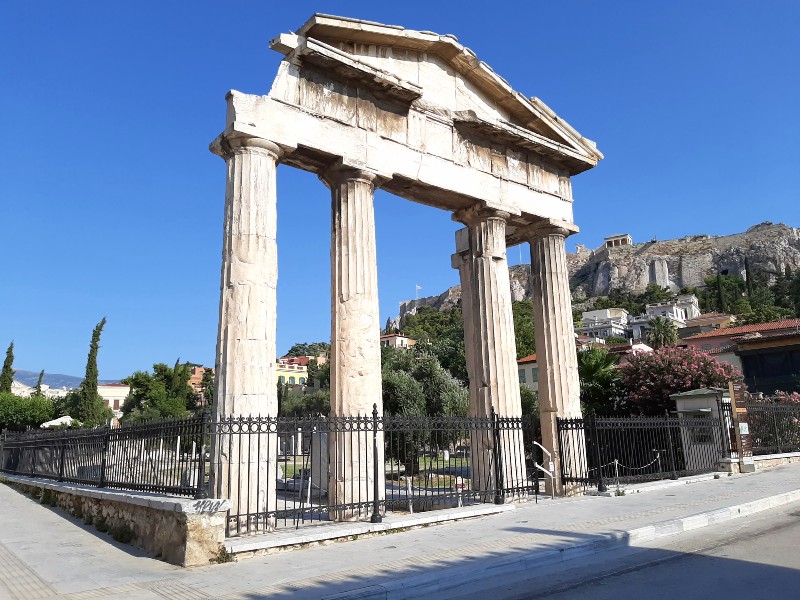
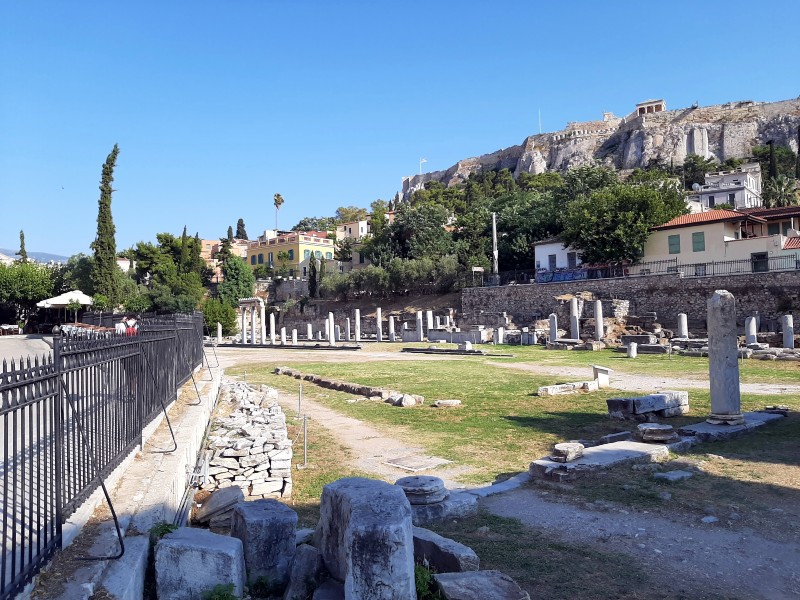
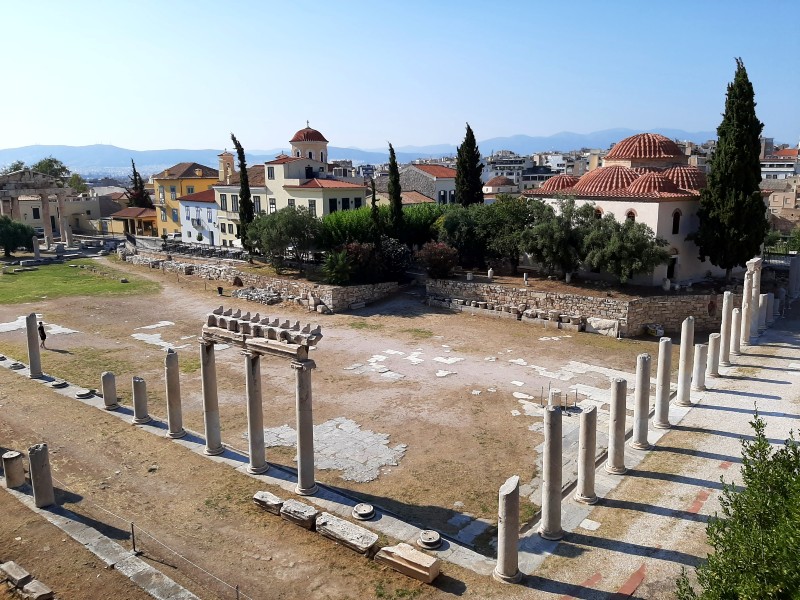
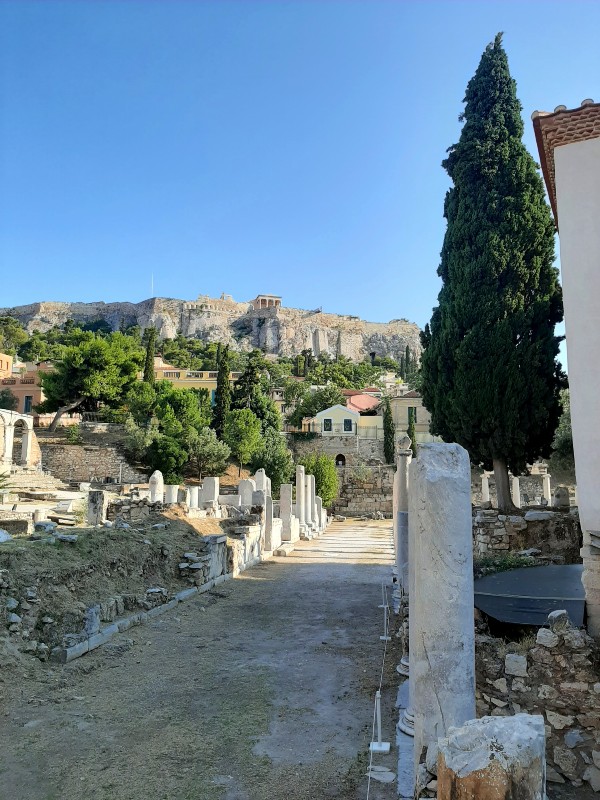
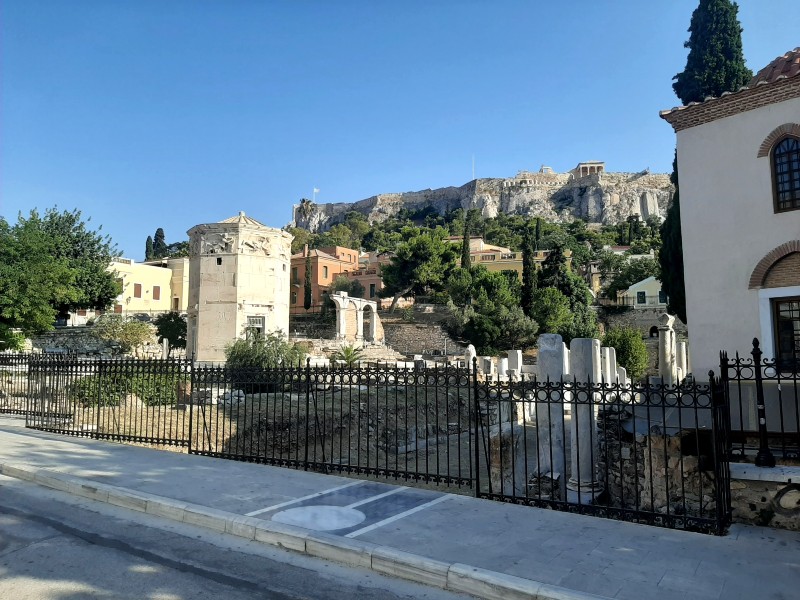
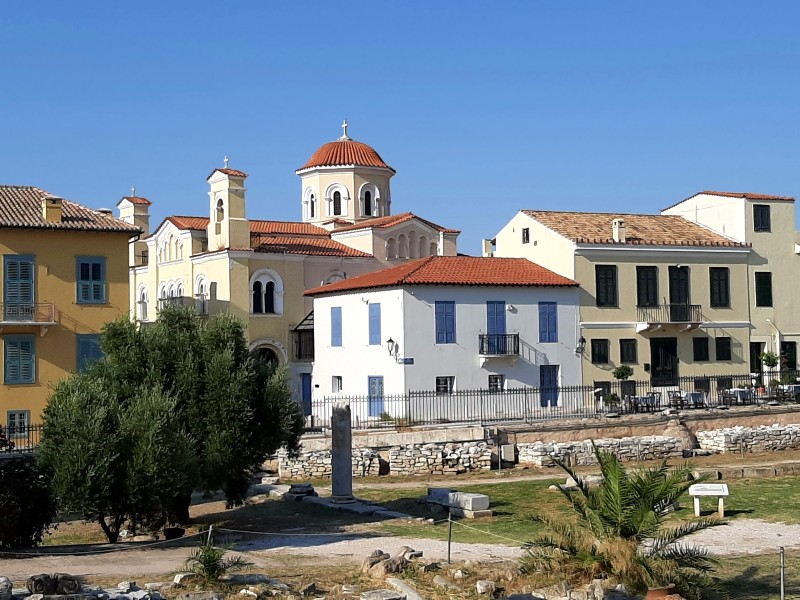
Plaka
Although the parts of Athens which we just explored are basically part of the larger Plaka area, we haven’t yet set foot in Plaka proper.
The narrow, winding streets which you can find directly to the south and east of the Roman agora are considered to be the heart of the Plaka neighbourhood.
These streets which run partly up the Acropolis hill which dominates central Athens are the oldest residential parts of town.
When Athens became the capital of the modern Greek state in 1834, it was no more than a large village, having less than 10,000 inhabitants.
Basically, Athens was just the Acropolis and a few neighbourhoods such as Plaka which were built directly at the foot of the hill.
It’s a fact which might be difficult to grasp when walking through the commercial heart of Athens or looking out over the massive urban sprawl from the top of the Acropolis or one of the other hills in the city.
I don’t know many cities which have went through such massive changes like Athens, going from a population of around 200,000 to 300,000 people in the days of Socrates to 7,000 in Ottoman times to the 3 million people who nowadays call the greater Athens area home.
When you set foot in Plaka and walk through the meandering streets, you will however instantly experience the at times village-like surroundings and atmosphere, perhaps even forgetting you are in the middle of an European megacity.
Plaka makes for a great area to discover without a map, guidebook or GPS to guide you.
It’s an area which is made for wandering around and discovering little streets, cul-de-sacs and steps leading further up to the hill.
It’s a highly picturesque area too, and there are plenty of great little cafes and tavernas to stop for a coffee, drink or meal.
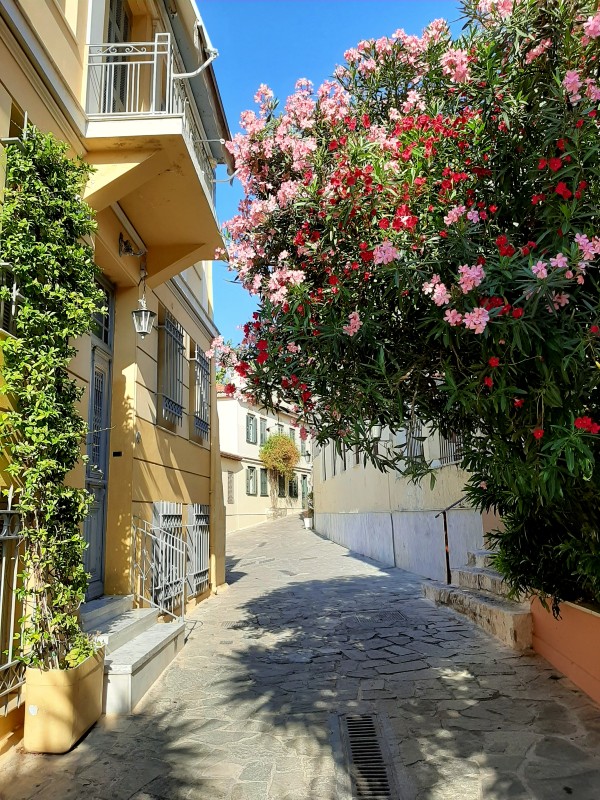
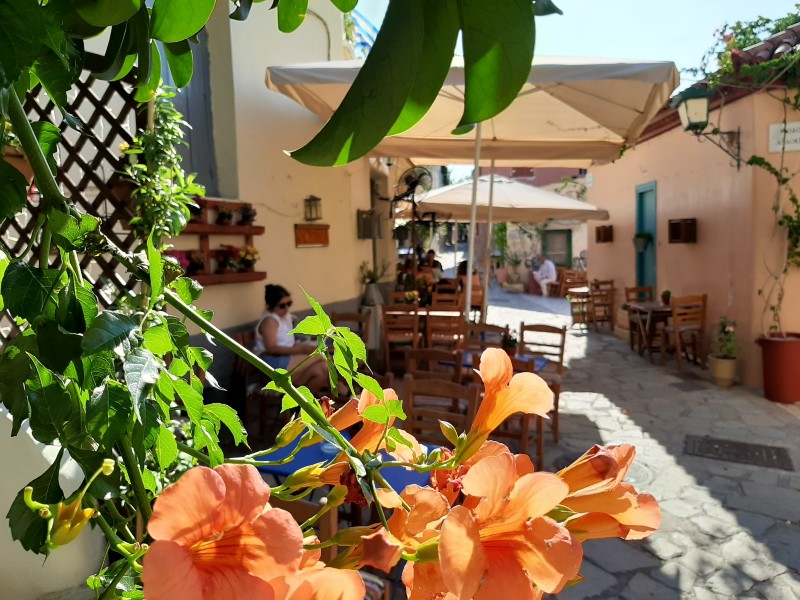
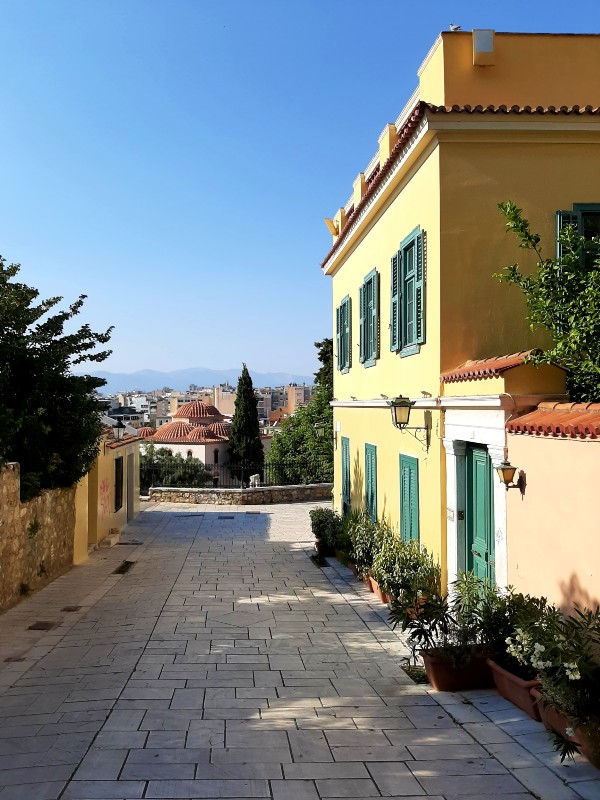
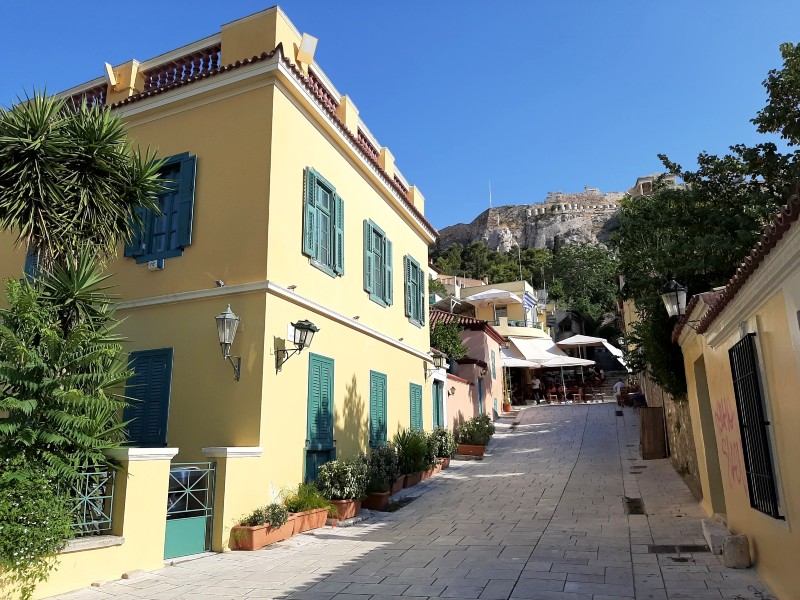

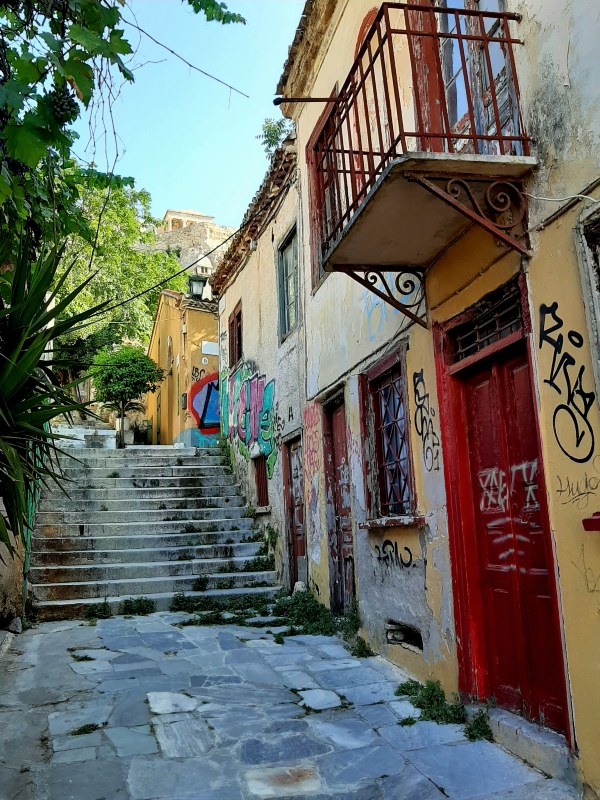
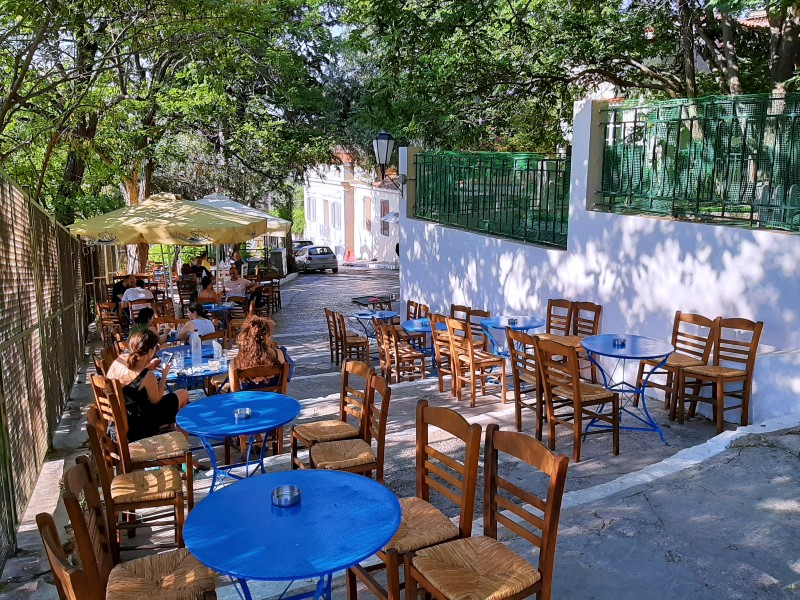
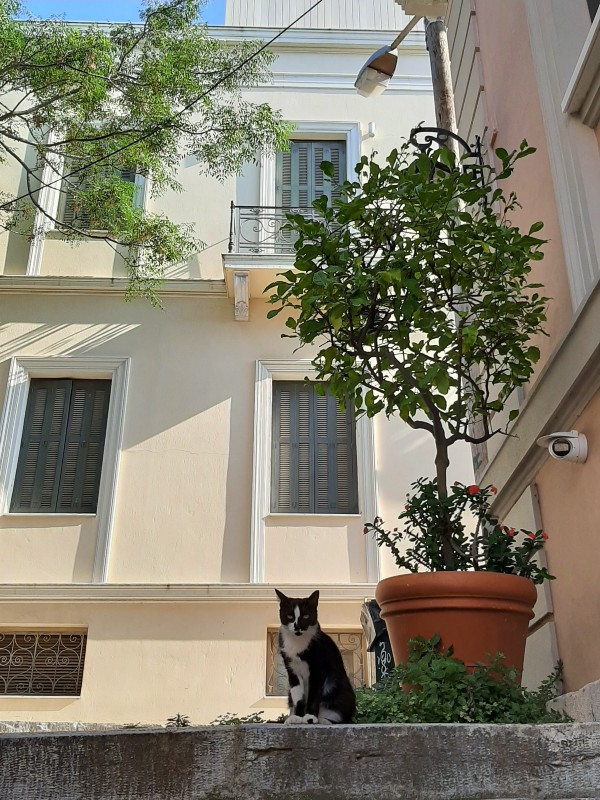
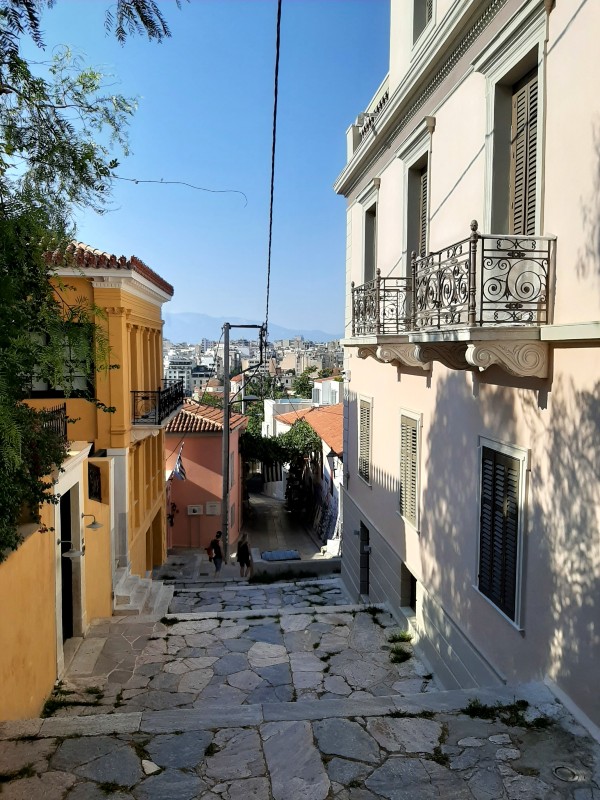
Plaka stairs
One of the nicest parts of Plaka is a narrow street called Mnisikleous, better known among the locals as the “Plaka stairs”.
As you might expect from the name, this is a set of stairs up the hill.
It’s completely lined by cafes and taverns and is a popular place among locals as well as foreign tourists to have a drink.
When visiting Athens, it’s also one of my favourite locations to stop for a freddo espresso (Greek-style iced espresso topped with foam).
Unfortunately, thanks to the corona virus and social distancing between tables it meant that the steps were not as lively as it used to be.
Normally the stairs are packed with chairs and tables, with cafes even putting pillows on the steps for guests to sit down.
Although the vibe was distinctly different when I visited during this summer trip, it still made for a great spot to sip my freddo espresso.
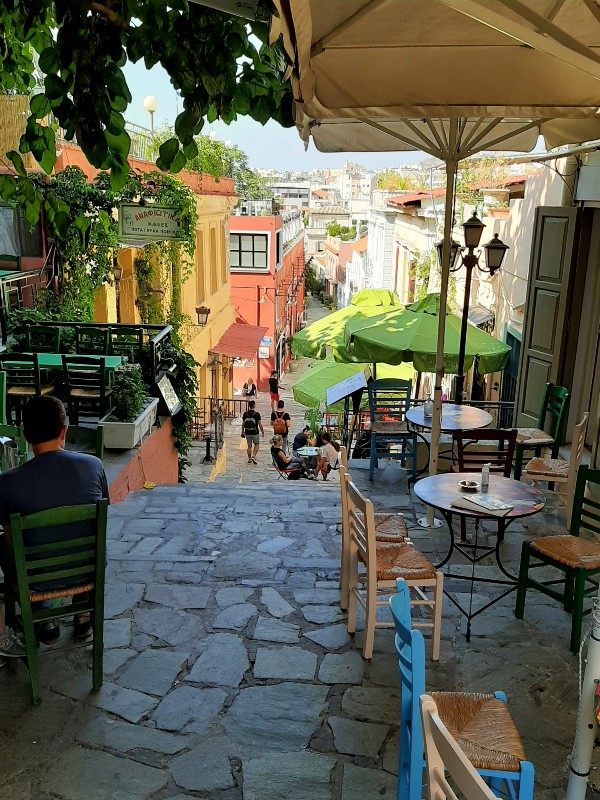
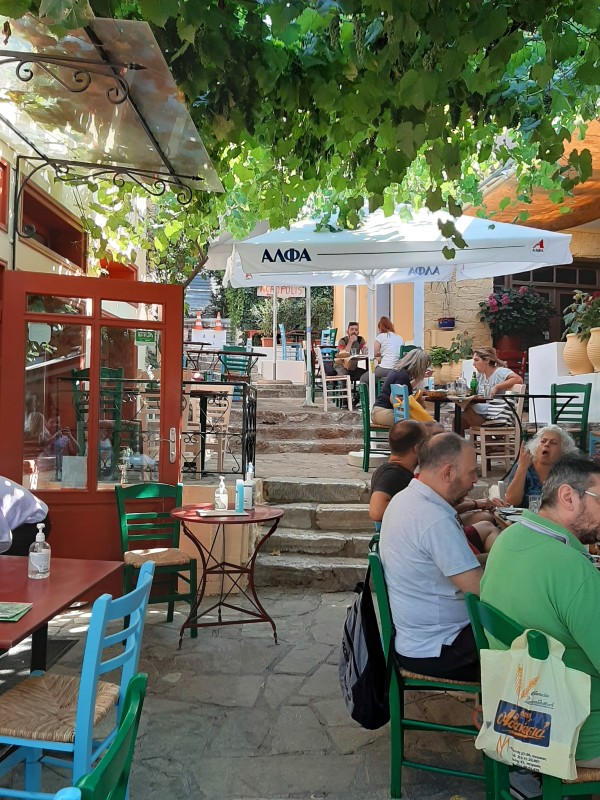
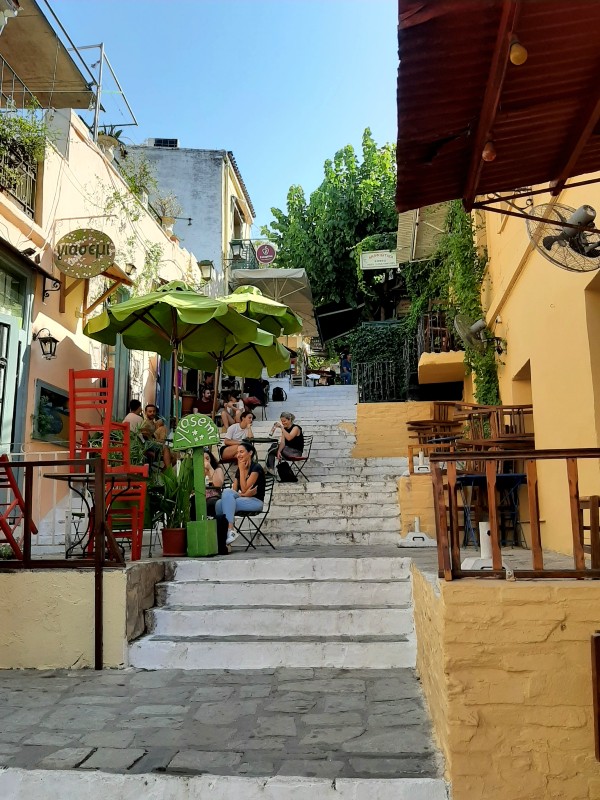
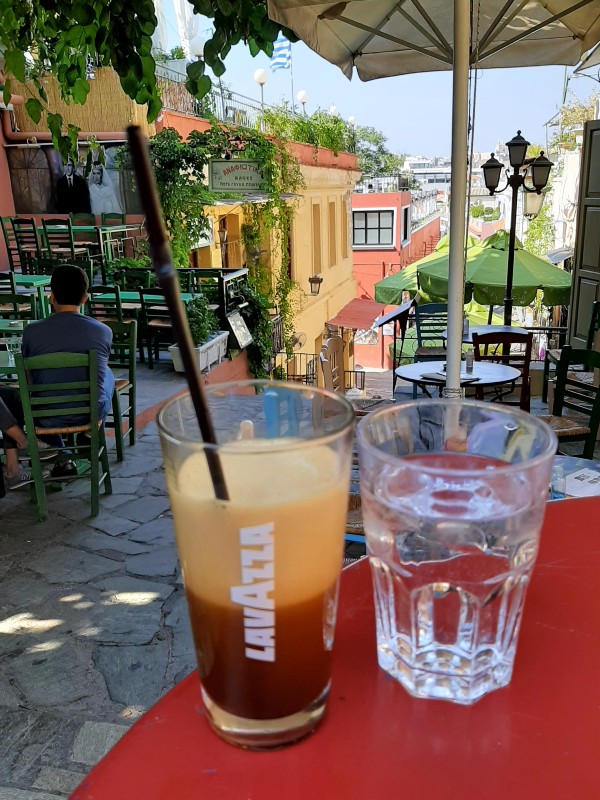
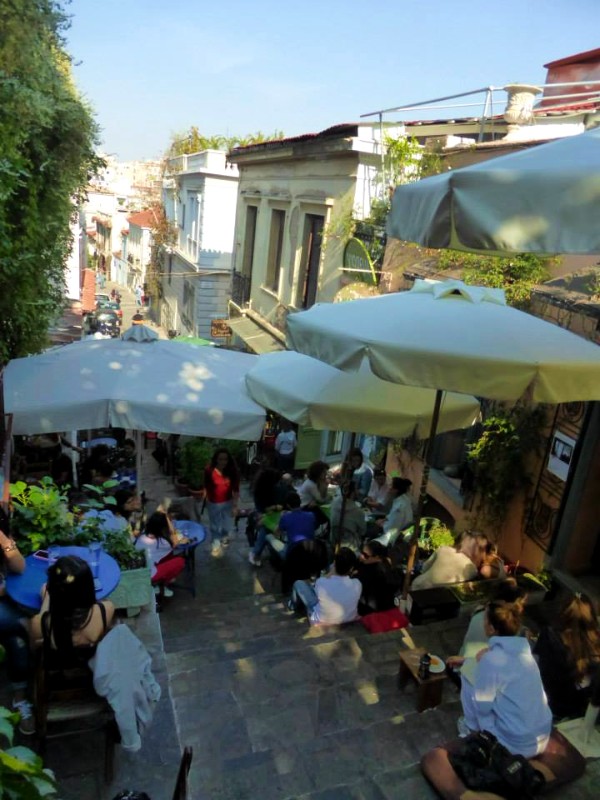
Dinner
After the coffee break, it was time to meet up with an old friend and to head somewhere for some drinks and a meal.
There are plenty of taverns in the Plaka area serving affordable, authentic Greek fare.
We sat down at a random place for some beers, Greek salad and traditional meatballs, which hit the spot.
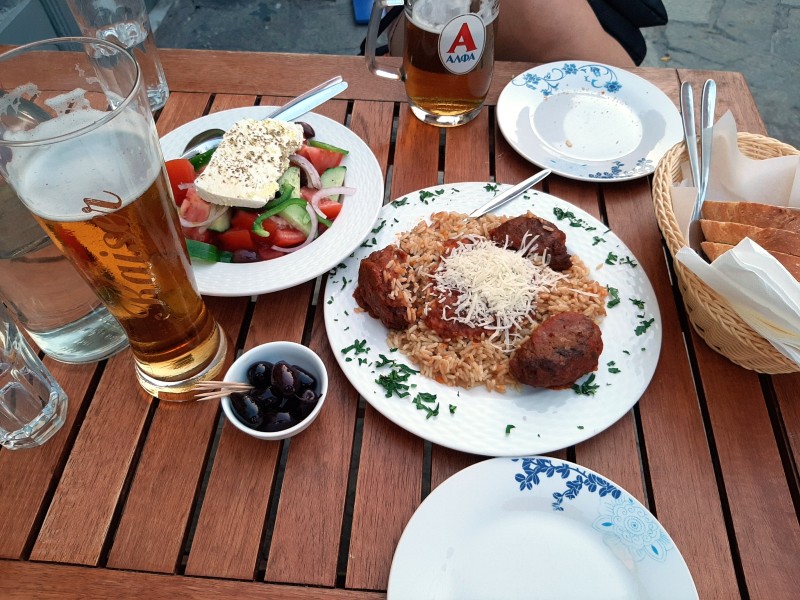
Evening walk
A great aspect of summers in Greece are the long daylight hours, which means that even in the late evening hours you can still wander a bit around to take in some sights.
I wandered to the area of Plaka right in between the Acropolis and Syntagma, which features more narrow lanes and in its lower half some more shops and pubs.
One of my local favourites is colourful Brettos, which happens to be one of the oldest bars of Athens.
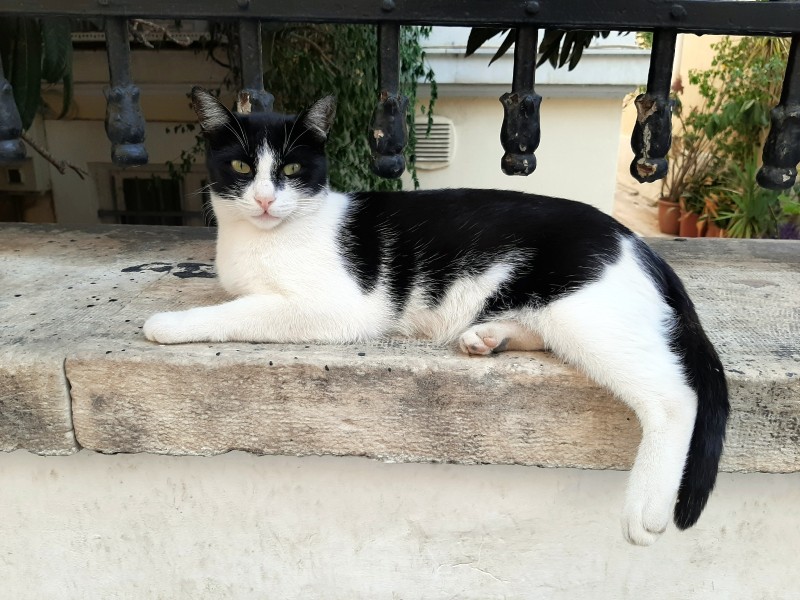
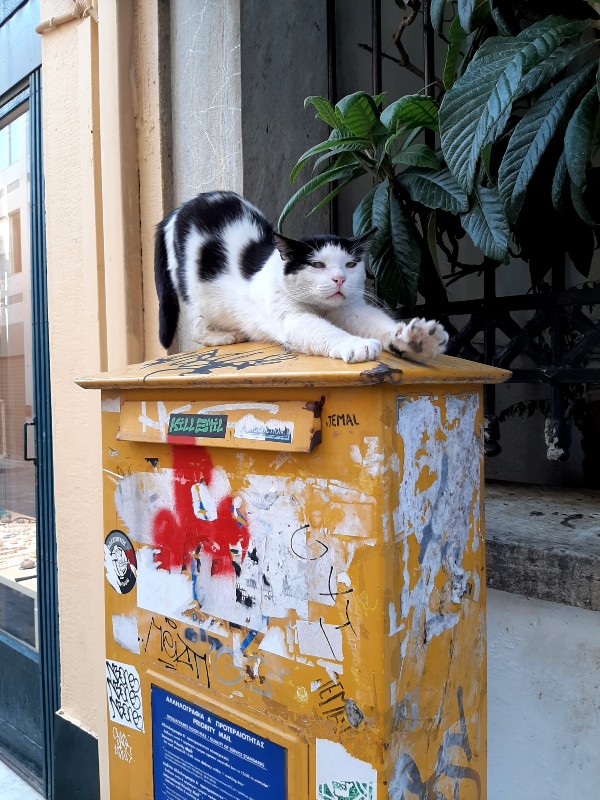
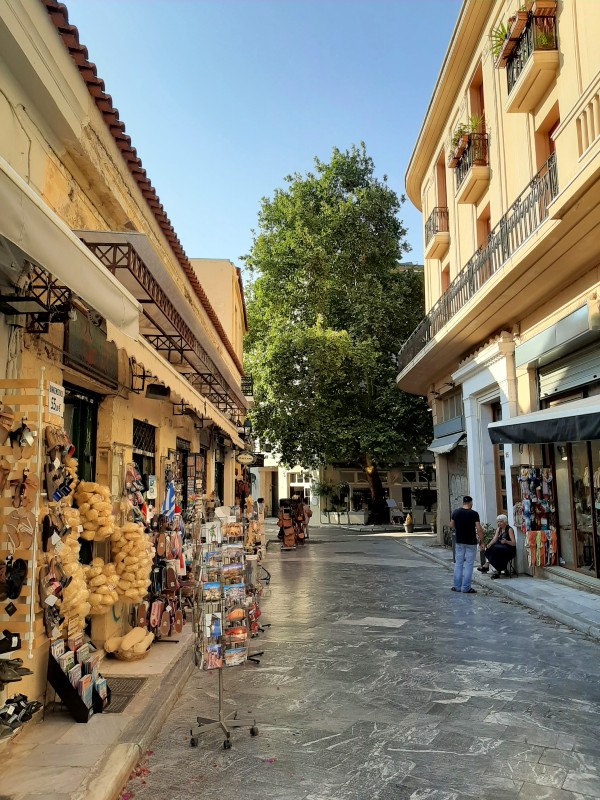
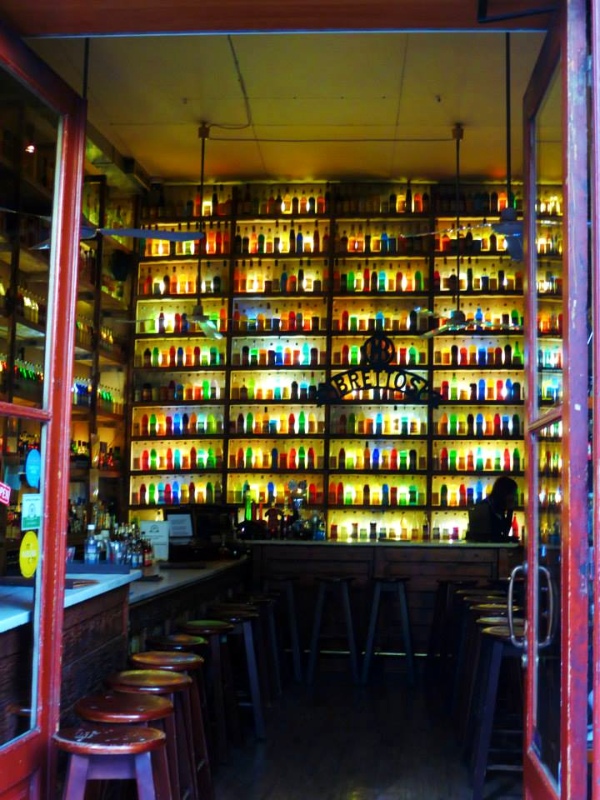
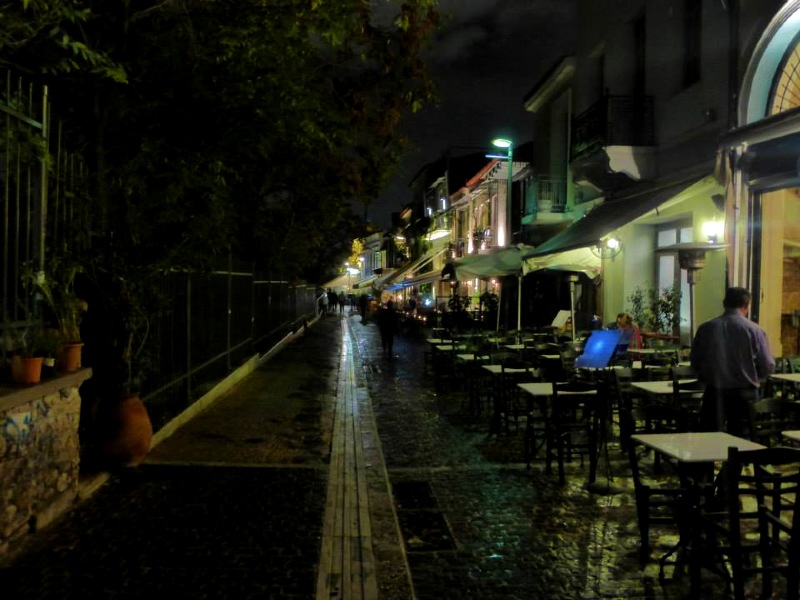
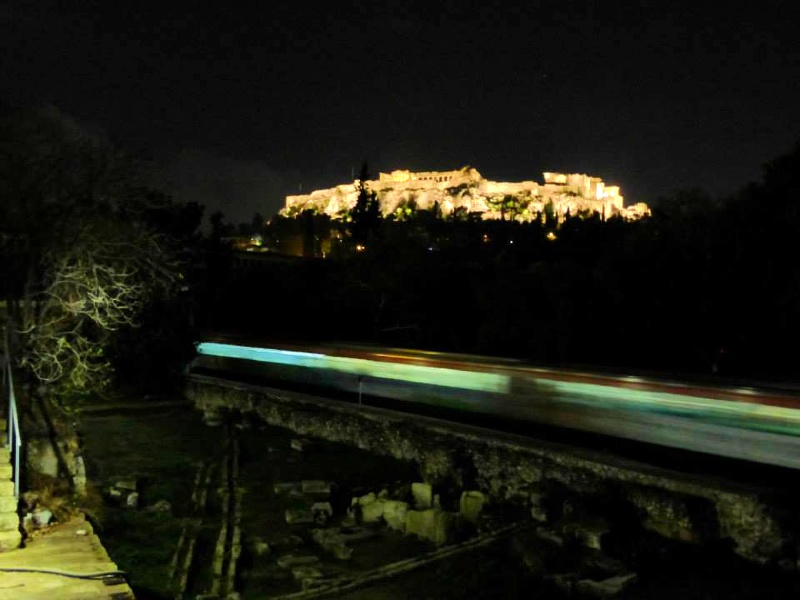
Acropolis
When walking through the Plaka or Monastiraki areas of Athens, you will have great views of the Acropolis from almost every street or square.
Needless to say, it’s absolutely worth it to climb up the Acropolis hill from Plaka and to visit the Parthenon from up close.
You can read much more about that in the next chapter of this trip report!
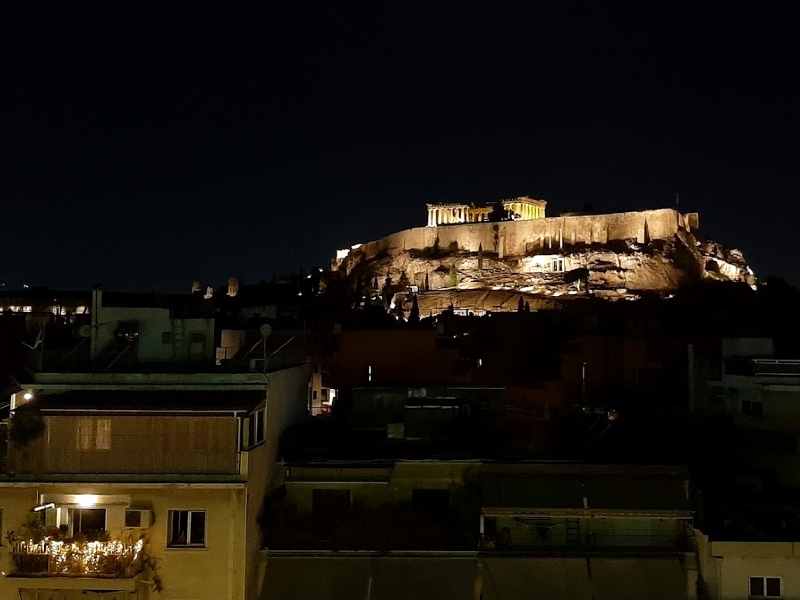
Trip report index
This article is part of the ‘A Dodecanese Dream: Summer Island Hopping in Greece‘ trip report, which consists of the following chapters:
1. Back in the Skies – My First International Flight in the Age of Corona
2. Review: Kimon Hotel, Athens, Greece
3. Exploring Plaka: Through the Winding Streets of the Old Town of Athens (current chapter)
4. Climbing up the Acropolis: Visiting Athens’ Most Famous Sight
5. Review: Skyserv Melina Merkouri Lounge Athens Airport
6. Review: Sky Express Athens to Naxos (ATR 42)
7. Review: Studios Zafiri, Naxos Town, Greece
8. Naxos Town: The Gorgeous Historic Heart of the Cyclades
9. Review: Blue Star Ferries Naxos to Astypalea
10. Review: Belvedere Studios, Astypalea Town, Greece
11. Astypalea Town: The Unknown Crown Jewel of the Aegean Sea
12. Astypalea Island Guide: Exploring the Butterfly of the Aegean
13. On a Night Boat in Greece – Astypalea to Kastellorizo With Blue Star Ferries
14. Review: Traditional Apartments Alexandra, Kastellorizo, Greece
15. Kastellorizo: A Look Around Greece’s Easternmost Island
16. Hiking on Kastellorizo: Two Sunset Hikes Detailed
17. Review: Olympic Air Kastellorizo to Rhodes (Dash 8-100)
18. Guide: How to Travel From Rhodes to Halki by Ferry
19. Review: Dorothea Apartments, Halki, Greece
20. Halki Town: Eating, Swimming & Relaxing in Beautiful Emborios
21. A Hike to Horio: Exploring Halki’s Old Abandoned Capital
22. Guide: The Best Beaches on the Island of Halki
23. Review: Hermes Hotel, Rhodes Town, Greece
24. A Visit to the Delightful Old Town of Rhodes
25. Review: Aegean Airlines Domestic Flight Rhodes to Athens
26. End of a Dream Holiday in Greece: One Last Day in Athens

